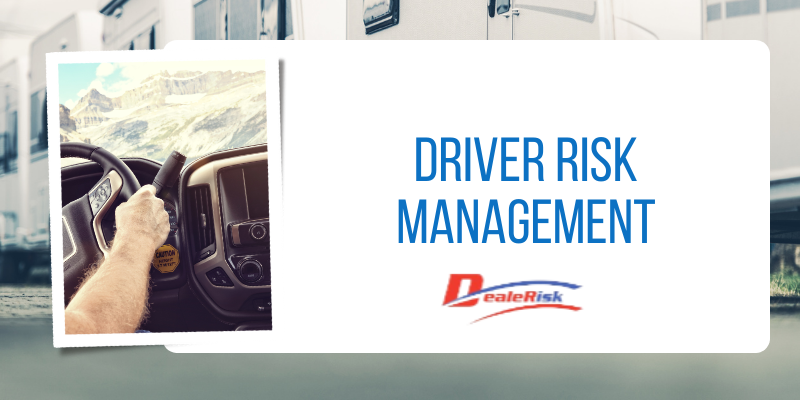Driver Risk Management
Written by Eric Petersen, CIC

One of the largest employee management issues that we hear about from our clients is that of how to deal with drivers that have bad driving records. With a slim talent pool to choose from, many dealerships hire individuals on the spot without doing a driving record check. All too often, that new hire has issues on their driving record that either prevents them from being insured or soon after being hired displays undesirable conduct in a vehicle.
While not a perfect science, analyzing an employee’s driving record is a great way to predict their future behavior. If you are not running Motor Vehicle Reports (MVR’s) aka driving records on each of your employees and prospective employees, follow this step by step process to get started.
This risk management activity will position you to minimize vehicular accidents, limit injuries, increase productivity and provide you with ammunition to give the insurance company to lower your insurance cost.
Understand Your State’s Law – The rules regarding employer’s viewing driving records for employees or potential employees varies state by state. Check with your state to determine whether or not you, as the employer, can access a person’s driving record. You most likely will need to have received written permission from the driver in advance. Many states allow you to gain access to the driving record directly through an online portal, making this a fairly easy process for your administrative staff to complete. It’s important to note that there typically is a charge for doing so, anywhere between $5 and $15 per record depending on your state. In states where the driver needs to make their own request, make it easy for them to do so with simple directions on how to acquire their MVR. You may also want to consider reimbursing a potential employee for the cost of the MVR.
Create Written Policy – After you know what your company can do within your state for ordering MVR’s, write out your driver policy. The policy should walk through the steps that your company and each driver (or potential driver) must take. Answer these questions to create your policy:
- Who will be responsible for pulling and paying for the MVR’s?
- What type of violations will be acceptable on an employee’s driving record? (ask your insurance company for help creating these guidelines)
- Will you require a Driving Test before an employee is allowed to drive a vehicle?
- What will the Driving Test involve and who will be responsible for administering it?
- What forms or supporting documents do you need to include? (MVR Authorization Form, MVR Guidelines, Driving Test Scorecard)
- What disciplinary actions will the company take upon learning about any violations or accidents?
- What personal driving violations are the employees required to inform the company of? (ex. Operating Under the Influence, Reckless Driving, etc.)
- Are any positions within the company allowed to take a company vehicle home and or use it for personal use?
- Will employee family members be allowed to drive the vehicle?
Verify MVR Guidelines with Insurance Company – Send your company’s written policy with your MVR Guidelines included to your insurance agent for review by the insurance company. Most insurance companies utilize similar standards for driving violations, however, it is always best to ensure that you are both on the same page. This also shows the dedication to proper risk management that your dealership believes in which will help for better insurance pricing throughout your relationship.
Run MVR’s Annually – Your insurance company will most likely run your employee’s driving records about 60 days prior to your insurance renewal. Unfortunately, they will not share any information with you unless a driver is ineligible to drive based on violations or accidents that the employee incurred the following year. Because the insurance company will not share this information with you, we suggest that you run your own set of MVR’s 90 days prior to your insurance renewal. This allows you time to take disciplinary action before the insurance company forces you to and eliminates the potential for a serious accident by putting you in control of the drivers for your fleet. No one wants to have a bad accident occur with a driver who has a subpar driving record. This is a gold mine for any plaintiff attorney who gets involved. They will extort you and your company for negligence in allowing a dangerous driver to operate one of your vehicles.
Enforce Disciplinary Action – Follow your company’s disciplinary process that you established in your written program. Many dealers have difficulty in hiring qualified employees that also meet driving regulations to begin with and then are more lenient when a violation does occur. Doing this opens your company up to more liability exposure and could create an employment lawsuit if you enforce the rules differently between employees. Once you write your disciplinary actions, follow them for everyone within the company, even the owner.
Because every dealership has a large exposure on the road, the management team must take every precaution they can to minimize that exposure. Implementing a driver policy will help you avoid unnecessary accidents and unproductive administrative issues within your company.
For help creating a policy like this or other risk management processes, contact an DealeRisk team member today.


Recent Comments